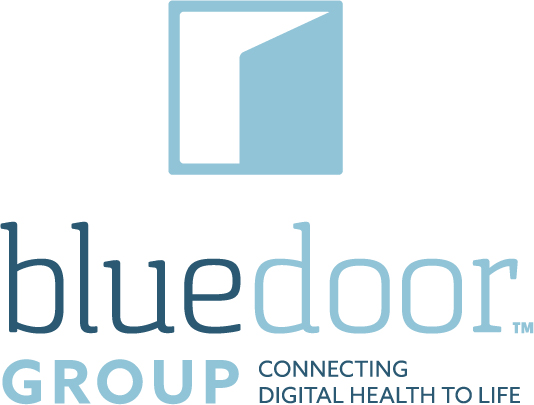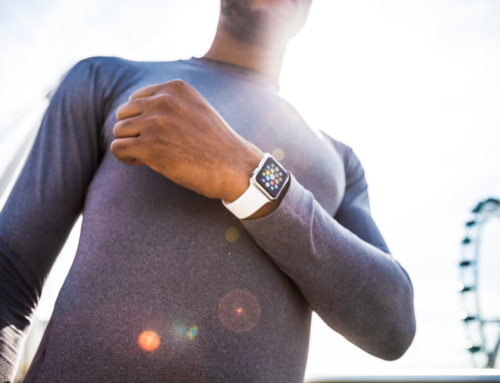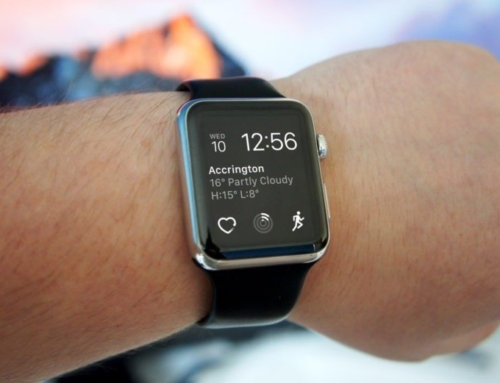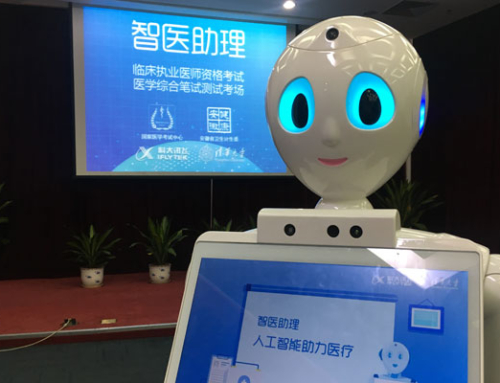By MobiHealthNews | June 22, 2017

Virtual reality has moved from science fiction to marketable consumer product astonishingly quickly, partly because the incorporation of the smartphone into the technology makes it accessible, if not ubiquitous. It’s looking more and more like those who bet that virtual reality is here to stay, and not a flash-in-the-pan trend, made the smart bet.
But what about in healthcare? Could a technology primarily associated with gaming turn out to be a serious therapeutic tool? Well, a growing number of doctors, researchers, and entrepreneurs think it can. Some are even starting to collect efficacy data to that effect. In May, Kalorama reported that the virtual and augmented reality market in healthcare grew from $525 million in 2012 to an estimated $976 million in 2017.
Virtual reality is showing promise in treating pain, phobias, post-traumatic stress disorder, smoking cessation, and even at the dentist’s office. Below, we’ve rounded up 15 VR use cases, the companies or research institutions that are investigating them, and the successes they’ve had so far. Read on for the whole list.
1. Surgical Training
As far as medical understanding and technological advancements have come, educating current and prospective doctors is still largely done the old-fashioned way: books, tests, pens and paper. Virtual reality enthusiasts aren’t standing for it, especially when it comes to training medical professionals for surgery.
Fed up with the almost comical-sounding current method of surgical training, – which take place at a few specialized centers around the country and requires the use of expensive artificial body parts – a few innovators are offering a new option.

Osso VR, which just raised $2 million, provides software that creates a virtual operating room on VR platforms like Oculus Rift/Touch or the HTC Vive. Practicing surgeries in virtual reality allows surgeons to get in more reps, particularly on complicated procedures.
“Right now the way they’re doing it is people have these devices in their trunks, you can only fit like one in and they drive around with hundreds of dollars in disposable, simulated bones to allow people to practice one procedure once,” founder and CEO (and trained orthopedic surgeon) Dr. Justin Barad said last year in a presentation at Health 2.0. “I’ve done surgeries where I just sat there reading the instruction manual like we were putting together IKEA furniture because people don’t have a training option that’s something like this. So I really hope this is the future of medical training to increase patient safety, decrease complications, and increase the learning curve for complex medical devices.”
Chicago-based Level EX is another surgical training innovator. Airway EX, the company’s first app, is a surgical training simulator built by video game developers and physicians from real footage of surgeries. It was launched in beta in October 2016 and available for free on iOS and Android, and the app offers physicians the opportunity to perform virtual airway surgery on realistic patients – which are detailed down to their pores – across 18 different procedures on the airway. The game is designed for anesthesiologists, otolaryngologists, critical care specialists, emergency room physicians and pulmonologists. Along the way, they can earn Continuing Medical Education credit by playing the game.
The idea came to CEO Sam Glassenberg after realizing there was a dearth of surgical simulation centers around the country, and that the simulators lacked the sophisticated graphics and video he saw in the video game industry. Glassenberg, a game developer who comes from a family of doctors and has many friends in medicine, had also been asked several times to help build surgical training programs.
“There is a big gap between surgery training simulations and the video game industry. It’s like the old business video game distribution model where the equipment was expensive, so you’d grab your roll of quarters and go across town to an arcade,” Glassenberg told MobiHealthNews. “Of course, now you don’t do that, because what you have in game consoles and computers is way better, but the surgical training simulators of today are still like the Pac-Man arcade games. It’s that level.”
Through realistic simulations of human tissue dynamics, endoscopic device optics and moving fluids to recreate life-life surgeries, doctors who need to practice surgical techniques can do so in a way that doesn’t run the risk of harming anyone, even though mistakes in the game can end up a bit shocking.
“It bleeds, it coughs, it reacts and it’s running on a device you already own,” Glassenberg said. “It’s a totally reactive patient.”
Additionally, the availability of the app means surgeons can really explore in ways they otherwise couldn’t with traditional training modes.
“Right now, if you want to try out a new device, they reserve a cadaver lab, or you a mannequin in a room,” Glassenberg said. “But the beauty of this is you have it on a tablet or phone and it reacts, but it’s not a live patient. It’s perfectly safe. You can try things you never would.”
2. Pain Management
Probably the virtual reality use case we’ve covered the most at MobiHealthNews is pain management, specifically Cedars Sinai’s virtual reality program, headed up by Dr. Brennan Spiegel. As Cedars Sinai, patients use virtual reality to escape the “bio-psycho-social jail cell”, as Spiegel calls it, of the hospital bed. Using apps made by Applied VR, they have deployed VR headsets to a number of patients to help them manage pain.
“We’ve now done this with well over 300 of our patients and we have been learning a lot about when it works and when it doesn’t work,” Spiegel said. “How effective is this for managing conditions like pain, managing depression, managing anxiety, even managing hypertension?”
In a small controlled study, the VR technology was able to drop patients’ average self-reported pain scores from a 5.4 to a 4.1. A 2D distraction experience in the control group only dropped that score to 4.8. And there’s some evidence that, by noting whether the headset helps or not, the technology could be used to help determine when pain is a result of something in the body or purely mental.
You can read more about Spiegel’s efforts at Cedars Sinai here and here.
3. Patient Education
Pain management is just one area where Cedars Sinai is exploring virtual reality. The hospital is also partnering with Holman United Methodist Church in south LA on a community health education initiative aimed at reducing hypertension in a vulnerable population.
The education initiative is much bigger than VR. But the VR aspect is interesting. Members of the Holman congregation used a VR program that takes users into a virtual kitchen where foods are labelled with their sodium content. It then takes them inside the body for a visualization of what hypertension does to the heart. Finally, Cedars-Sinai and Holman UMC created a relaxation app to help congregants deal with stress, which also contributes to hypertension. Holman Pastor Rev. Kevin Sauls narrates the guided meditation in the app.
Another virtual reality company, BioLucid, also uses VR for patient education, designing virtual tours of the human body. BioLucid was recently acquired by digital health M&A juggernaut Sharecare.
“Visual storytelling technologies – particularly virtual reality blended with 360-degree video – have boundless potential in healthcare and patient engagement, yet consumer-facing innovation in VR has been limited mostly to entertainment and gaming,” Jeff Arnold, chairman and CEO of Sharecare, said in a statement at the time. “By differentiating our platform with BioLucid’s immersive simulation of the human body, we can turn data into actionable, visual intelligence, and make a transformative impact on patient engagement, health literacy, medical education and therapy adherence.”
4. Clinician Education
Gone are the days where text books and two dimensional anatomical images are the only way for physicians to learn about common afflictions. Salix Pharmaceuticals, a New Jersey-based drug development company that focuses on gastrointestinal conditions, developed an interactive virtual reality platform to guide clinicians through an open-minded approach to treatment, which can be difficult to pin down due to the mysterious etiology of IBS.
In an educational voyage up close and personal with the GI tract, Salix will guide healthcare providers through the numerous theories floating around on the potential causes of IBS, including changes in the gut-brain axis, an imbalance in the gut microbiome, hypersensitivity to pain signals in the intestinal wall, or a chronic imbalance set off by a temporary gastrointestinal bug.
“As a gastroenterologist who treats conditions like IBS on a daily basis, I believe this virtual reality experience will move GI treatment forward by helping healthcare professionals better understand this complex condition,” Dr. Brooks Cash, one of Salix’s gastroenterology advisors, chief of gastroenterology and director of the Gastroenterology Physiology Lab at the University of South Alabama Digestive Health Center, said in a statement.
5. Physical Therapy and Rehabilitation
A few years ago, the Microsoft Kinect and similar 3D motion tracking cameras were set to revolutionize physical therapy. By tracking and gamifying movement, the Kinect could be used to send patients home with exercises, motivate them to do those exercises, and collect hard data on things like range of motion.

VIrtual reality enhances that capability even further. VRPhysio is a Boston-based company that offers immersive, interactive virtual reality environments that trick patients into doing physical therapy exercises without even knowing it. For instance, one game puts virtual swords in the patients’ hands and asks them to slice through a line of targets that appear on the screen. To accomplish that goal, the patient will necessarily test out the range of motion in their shoulders. Another gives patients an always-on water cannon that shoots in the direction their head is pointed, then instructs them to fill a moving barrel — all the while taking their neck through a full range of movement.
On the backend, a physical therapist can see data collected through the device and can change the parameters of the game on the fly in order to guide the patient to the most beneficial exercise.
Another company, MindMaze, is using VR for stroke recovery. For stroke victims who have lost the use of the left hand but retain the use of the right, for instance, the computer will project a virtual reality depiction of the nonfunctional left hand, which is controlled by the patient’s movement of the working right hand. This can trick the brain into kickstarting the functionality of the other hand.
That functionality doesn’t use the mask, but another MindMaze product, called Mask, does. Mask is a thin sensor that can be worn with a VR headset. It can detect the user’s facial expressions and map them onto an in-game avatar.
“If you go into, say, the autism spectrum or other aspects of social interactions, you can imagine a scenario where a patient is controlling something and you’re able to emote,” CEO Tej Tadi told MobiHealthNews. “It’s helpful in a therapeutic context, but also as a true clinical monitor for other kinds of deficits, not necessarily stroke. The Mask is designed to capture emotions either for therapeutic effect or just for consumer gameplay. It just works on both metrics.
6. Post-traumatic Stress Disorder
Post-traumatic stress disorder, or PTSD, is one of the most pervasive mental health conditions in the United States, as well as among the most challenging to treat. Today, many experts are beginning to agree that exposure therapy can help, and virtual reality can provide that exposure in a physically safe, controlled environment.
It’s a big issue to tackle: Experts say one in three people who experience an extremely traumatic event will develop the condition, and 2013 statistics report 69,000 brand new cases of PTSD diagnosed in veterans from wars in Afghanistan and Iraq, What’s more, according to an NBC interview with USC Davis School of Gerontology professor Albert “Skip” Rizzo, the condition can lie dormant for years, meaning those who may have developed PTSD decades ago can begin to experience the worst symptoms much later in life.
Anything could trigger an episode in which the person with PTSD is transported back to the moment the traumatic event or events happened. It seems counterintuitive to purposely put a PTSD sufferer back in that place, but experts say using virtual reality creates a world where people with the condition can exert control over the situation, therefore experiencing a sense of resolution.
“Exposure therapy is an ideal match with VR,” Rizzo told NBC. “You can place people in provocative environments and systematically control the stimulus presentation. In some sense it’s the perfect application because we can take evidence-based treatments and use it as a tool to amplify the effect of the treatment.”
7. Conversion Disorder Treatment
The Stanford University School of Medicine and the Stanford Virtual Human Interaction Lab started working last year on a small clinical trial investigating the possibilities for virtual reality in treating conversion disorder. Participants will use special software developed by the VHIL, combined with the Oculus Rift, to inhabit a virtual avatar body.
Conversion disorder, also known as functional neurological symptom disorder, is a condition wherein mental or emotional stresses are converted into physical symptoms.
“It’s kind of the roots of psychiatry,” Dr. Kim Bullock, a clinical associate professor of pyschiatry and behavioral sciences at Stanford and the lead researcher on the study, told MobiHealthNews. “Everyone’s very curious about this subject because it’s the intersection between mind, body, culture, environment. It kind of embodies everything that we’re trying to figure out. But very little research has been done on this subject. There’s no big pharmaceutical money behind it and there’s really a lack of awareness among providers about how ubiquitous this disorder is, because it kind of infiltrates every medical specialty.”
Bullock said that neuro-imaging studies have shown that in people with conversion disorder, a part of the prefrontal cortex that normally inhibits the amygdala from taking control of the motor-sensory cortex doesn’t function like it should. Most existent treatments focus on calming down the amygdala so it doesn’t become overactive and “hijack” motor functions or senses, and VR could serve a similar function.
8. Smoking Cessation
Redwood City, California-based MindCotine is using virtual reality to address one of the oldest and most difficult health hazardous habits on the planet: smoking.

Since smoking is more than a physiological need, the Argentina-born cofounders Cristian Waitman, Nicolas Rosencovich and Emilo Goldenhersch say, so their VR program – which launched on Kickstarter in early June – brings together mindfulness, biofeedback and other elements of psychological techniques like immersion to help prospective non-smokers change their behavior to change their habit.
Technically speaking, it means an app, a cardboard headset and a growing community of users to act as a support system and research opportunity. Users download the app, which features guided meditation and calming imagery to encourage introspection before going on to an animated smoking experience, complete with sitting down with a cigarette in hand. It’s meant to be used 20 minutes per day along with tools and resources in the app to help deal with nicotine withdrawal systems.
9. Dealing with Fear
Death is an inevitable part of life, yet many struggle to accept that reality. While some may prefer to not think about it at all, others believe facing this fact of life head-on is the only way to truly reduce fear. Of course, thanks to virtual reality, people need not put themselves purposely in harm’s way in order to experience a near-death experience.
Researchers at the University of Barcelona used an Oculus Rift headset to create a virtual reality simulation called “the full body ownership illusion,” which uses the image of a human body the wearer assimilates to until they feel the body is their own. After they get used to that view, the VR headset shifts to a third-person viewpoint, which is mimics the experience some describe as “out-of-body incidents.” The small study, which was published in PLOS One, showed a lower anxiety about death.
VR can also help with children’s fear of needles. Pediatricians administering vaccines may try direct their young patients’ attention to colorful posters or don a puppet to get them focused on something – anything – other than the shot they were being given. But, this being 2017, a recent pilot studysuggests doctor’s office child diversions may start going virtual.
In a study of 244 children at Sansum Clinic locations in Santa Barbara and Lompoc, California, roughly half of the children were given virtual reality goggles to view ocean scenes while getting their seasonal flu shot. Parents and clinicians for both groups were surveyed after, and reported the VR group felt less pain and fear than those braving it without.
As innovative as the idea sounds, it didn’t come from an industry insider keenly aware of the way such technology has been taking off. Dr. Mark Silverberg, the clinic’s pediatrician, got the idea from his 15-year-old daughter.
10. Concussion Assessment

Virtual reality companies in the entertainment space are interested in eye tracking because it offers another hands-free way to interact with a virtual environment. But in the healthcare space, eye tracking has potentially lifesaving applications.
SyncThink, a Boston-based company that just last week won the grand prize at the Pulse@MassChallenge startup contest, is applying VR and eye-tracking to assess ability to focus as an indicator of concussion damage. This can be used to assess the extent of the damage immediately after an injury, or to track recovery practice with an objective measure.
The company has been working on eye tracking or concussions for about 10 years and has a partnership with the US Army. But VR allowed them to create a much more accessible version of the product.
“Eye tracking’s not new, it’s been around for about 30 years in all kinds of configurations,” CTO Daniel Beeler told MobiHealthNews. “We thought about two and a half years ago that VR is the perfect way to commercialize this in a cost-effective way and bring it to market. Eye-tracking has traditionally been the domain of large instruments in laboratory settings. The thing about VR is it’s a cost-effective way to introduce a mobile platform with eye-tracking.”
11. Aging in Place
Senior citizens are often firmly outside of the target market for consumer electronics, but digital health innovators have found the demographic refreshingly receptive to many forms of technology. As people may find themselves less mobile as they age, virtual reality could be a particularly big hit as a means of experiencing a world outside, and one MIT startup is jumping on that opportunity.
 Rendever offers Oculus-based VR headsets to people living in nursing homes, allowing them to “take a stroll down memory lane” by immersing themselves in imagery of their childhood home or favorite outdoor setting. Moreover, the VR serves to spark conversation among residents, and users can also go on a “tour” of a certain place together, like the Grand Canyon or Machuu Pichuu, or use a virtual paint brush to recreate famous works of art. The company reports facilities using their product have seen a 40 percent increase in their residents’ happiness
Rendever offers Oculus-based VR headsets to people living in nursing homes, allowing them to “take a stroll down memory lane” by immersing themselves in imagery of their childhood home or favorite outdoor setting. Moreover, the VR serves to spark conversation among residents, and users can also go on a “tour” of a certain place together, like the Grand Canyon or Machuu Pichuu, or use a virtual paint brush to recreate famous works of art. The company reports facilities using their product have seen a 40 percent increase in their residents’ happiness
“We started to notice once they were done with the demo they would go back to their friends at their table and talk about what they experienced. It was social, it lit a spark,” Reed Hayes, one of Rendevor’s founders, told the Boston Globe. “Can you imagine coming up with a new conversation after being there 10 years and you haven’t been out?”
12. Stress Relief
A general wellness use case is to create immersive, relaxing environments to promote meditation and reduce stress. Those apps are easy enough to find in the app store, but some companies are going further.
San Jose-based Happinss is offering virtual relaxation apps in the context of corporate wellnessprograms. The company launched a dedicated corporate VR wellness room at the Amdocs Development and Operations Center in Guadalajara, Mexico.
Another company, Fisher Wallace Labs, partnered with virtual reality headset company Zeiss to combine neurostimulation and VR into a new product called Kortex, which recently raised $123,000 on Indiegogo.
“I think one story of Kortex is kind of this transition from medical device to consumer device. Fisher Wallace Labs, we’ve been a medical device company for 10 years and we’ve manufactured one prescription neurostimulator for the last 10 years called the Fisher Wallace stimulator,” Fisher-Wallace cofounder Kelly Roman told MobiHealthNews. “And that is a handheld device that has two wires that come up to electrodes that connect to a headband. And we have FDA clearance for that device to treat depression, anxiety, and insomnia. … When I saw the mobile headsets coming to market, I recognized that the headband was in the same place and there was room for our electrodes without disrupting the headset. So from a design perspective it could work. So what we did was basically for Kortex we altered the intended use so it’s not to treat depression, anxiety, insomnia — it’s to manage stress and sleep, and that’s a general wellness claim.”
Fisher Wallace and Zeiss have plans to build special apps and curate content for VR-enhanced neurostimulation.
13. Fitness
Physical fitness is one of the most high-profile areas of digital health innovation, with countless wearables and apps on the market designed to help people get the most out of their bodies. On the other end, virtual reality typically only requires the ability to see. But technology marrying the two has proliferated nonetheless.
Connected stationary bike maker Peloton combines the exercise machinery with tablets to create virtual cycling classes. The $2,000 exercise bike integrated with a tablet-like screen allows sers can hop on the bike and join in live or pre-recorded classes with cycling instructors. During live sessions, real-time social features like leaderboards or video chats with friends keep users immersed in the process. The setup also allows users to track their rides and view combined metrics over time. It’s been a popular – and profitable – venture for Peloton, which just pulled n $325 million in late stage funding in May. In January, Peloton partnered with Fitbit to allow users to sync ride metrics directly to the Fitbit app, helping them see how cycling fits into their overall fitness goals. Each ride on Peloton is logged as an exercise in the Fitbit app, so all Peloton workouts and Fitbit data will be in one centralized location.

Peloton isn’t the only one. Three years ago, London-based Zwift launched a stationary bike MMO, or massive multiplayer online game. The game is displayed on a computer screen, but riders can adjust camera angles and other features from their phones, and a tablet version of the whole system is coming in the future. The system can also take in and use data from a chest-strap heart monitor, and can upload activity data to Strava, Garmin Connect, and Training Peaks.
In February 2013, Aetna launched Passage, which uses the Apple device’s built-in accelerometers as a pedometer to track the users’ steps whenever the app is open and running. It translates those steps to a virtual display of another location, shown on the screen in a 360 degree view. The app starts out with a course through Paris, which the user must complete in order to unlock subsequent locations.
And in December 2013. Santa Clara, California-based Blue Goji, co-founded by Guitar Hero inventors Charles Huang and Kai Huang, launched an exergame called Goji Play which is meant to be played at the gym on exercise machines such as treadmills, elliptical machines and stationary bikes. Blue Goji has three components: the app, available only on iOS devices, a set of wireless controllers that can be attached to any fitness machine, and an activity tracker to wear while exercising.
In September 2014, Rock Health graduate BitGym, which makes mobile software for smartphones and tablets that display virtual runs or tools while the user works out on a treadmill, exercise bike, or elliptical, launched a new product. BitGym doesn’t connect to the exercise machine but instead gauges the user’s speed using the tablet’s front-facing camera, so it can be used on any workout machine. And a very similar crowdfunded offering, FitTrip, tracks heart rate in addition to speed and cadence.
14. Training Midwives
All of the advantages of using VR to train surgeons — a safe, controlled, inexpensive environment for building up clinical skills — can also apply to midwives.
The University of Newcastle in Australia announced in May that it’s using VR to prepare midwives for complications that could arise during a birth.
“With 15 per cent of births in Australia and New Zealand requiring some form of resuscitation – a number even higher in premature babies – it is imperative our students feel comfortable and confident applying their experience in a time-critical, emergency environment,” project leader Jessica Williams said in a statement. “New graduates may find transitioning from performing a neonatal resuscitation in an educational setting to a real-world emergency room an overwhelming shift, which is exactly why we designed the program to bridge that gap.”
The University uses Samsung GearVR, HTC Vive, and Microsoft HoloLens headsets for this and other educational initiatives. It is conducting a small randomized trial to see if this training is effective.
15. Dentist Visits
Most people don’t like going to the dentist, and some people find the experience extremely stressful. These days, dentists’ attempts to address the situation are along the lines of soothing music and beach scenes painted on the ceiling tiles. But VR could be game-changer.
The evidence so far is pretty scant — a single n=80 study published recently in the journal Environment and Behavior. Patients in the intervention group explored a virtual environment — using a Sony personal 3D viewer headset and a Zeemote JS1 Thumbstick Controller — while having a tooth pulled or a cavity filled. Interestingly, the group tested a coastal and urban VR environment and found that one reduced reported pain, but the other did not.
“Engaging with the coast VR was associated with significantly less experienced pain than standard care,” researchers wrote. “This effect remained significant after controlling for age, gender, dental anxiety, type and duration of treatment. By contrast, there was no difference in experienced pain between the urban VR and standard care, either before or after controls were added. None of the control variables were significantly associated with experienced pain in their own right.”
At least one dental practice, Lake Minnetonka Dental in Minnesota, has already started using VR with patients via a partnership with virtual reality company Visual.
Right now, the platform is being used by professional sports teams and at Walter Reed Army Medical Center. They’re currently focused on making the assessment even more useful.
“We can use this technology to help pinpoint the exact type of injury,” Beeler said. “Head injury is complicated. A force to the head could involve brain damage, it could involve inner ear issues like balance, it could be other issues that produce similar symptoms. We want to provide objective technology to identify the specific issue at hand and improve outcomes.”









